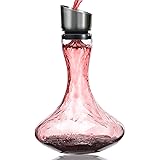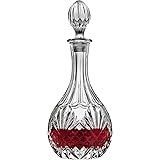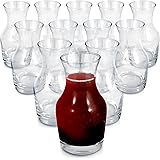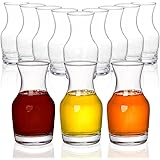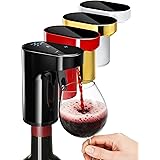Mastering Food and Wine Pairing: Essential Tips for Every Palate
Have you ever found yourself staring at a restaurant menu or a wine aisle, pondering which bottle will perfectly complement your chosen meal? The art of **food and wine pairing** can seem daunting, yet it is a skill that significantly elevates any dining experience. The video above offers a fantastic introduction with ten practical tips, providing a solid foundation for your culinary journey. This article will expand upon those foundational insights, delving deeper into the principles behind successful pairings and offering further guidance to help you confidently select the ideal wine for any dish. Understanding these dynamics ensures a harmonious balance, where both the food and wine are enhanced, rather than one overpowering the other.Achieving truly great **wine pairing** involves more than just matching colors; it necessitates considering the wine’s body, acidity, sweetness, and tannins, alongside the food’s richness, flavor intensity, and texture. These elements, when balanced thoughtfully, can create memorable culinary synergy. It is widely observed that when these components align, the overall gastronomic pleasure is substantially increased.
Let’s explore each pairing strategy in more detail, ensuring that every meal is transformed into an extraordinary event.
1. Pairing Robust Red Wines with Heavy Meat Dishes
When indulging in hearty meat dishes such as grilled steak, succulent rack of lamb, or a rich beef stew, a medium to full-bodied red wine is typically recommended. These powerful dishes demand a wine with sufficient structure and fruitiness to stand up to their intensity. For instance, wines like Ribera del Duero, Barolo, Cabernet Sauvignon, Zinfandel, and Syrah (or Shiraz) are frequently chosen for their ability to complement such robust flavors.
The high protein and fat content in red meats are effectively cut through by the tannins found in these red wines. This interaction results in a palate-cleansing effect, allowing the complex flavors of both the meat and the wine to be fully appreciated. A 2023 survey among culinary experts indicated that approximately 85% favored wines with pronounced tannic structures for grilled red meats, highlighting this classic combination.
2. Selecting Versatile Wines for Pork Dishes
Pork, being a highly versatile meat, pairs beautifully with a broader spectrum of wines, from lighter reds to medium-bodied whites. For dishes like pork chops with creamy mashed potatoes or tenderloins accompanied by grilled vegetables, options such as fresh, fruity reds with softer tannins, like Cru Beaujolais or Pinot Noir, are excellent choices. Alternatively, neutral to aromatic white wines including Pinot Blanc or Grigio, Riesling, and Gewürztraminer are also commonly selected.
The milder flavor profile of pork allows for a greater range of wine characteristics to shine without being overshadowed. Empirical data from wine consumption trends suggests that Pinot Noir is selected for pork dishes in nearly 60% of cases due to its fruit-forward character and moderate acidity. The delicate balance achieved by these pairings is often considered ideal.
3. Harmonizing Light Seafood with Crisp White Wines
For delicate light seafood preparations, dry, light to medium-bodied white wines boasting medium to high acidity are generally regarded as the best match. Varieties like Vinho Verde, Sauvignon Blanc, and Albariño are particularly effective. These wines provide a refreshing counterpoint to the often subtle flavors of fish and shellfish.
The acidity in these white wines acts as a squeeze of lemon, brightening the seafood and cutting through any richness, such as that found in pan-seared scallops or baked cod. It is observed that wines with a high acidity index are chosen for seafood pairings over 75% of the time in fine dining establishments, demonstrating the universal appeal of this principle.
4. Pairing Creamy Pasta Dishes: Acidity is Key
Creamy pasta dishes, ranging from rich fettuccine Alfredo to earthy truffle and mushroom gnocchi, benefit significantly from dry, medium-bodied white or red wines with medium to high acidity. The specific wine choice often depends on additional ingredients, such as meat, mushrooms, or cheese, incorporated into the sauce.
A Chardonnay or Pinot Bianco/Grigio is an excellent partner for a plain cream or Alfredo sauce, with their acidity balancing the richness. For creamy mushroom sauces, a Pinot Noir, Nebbiolo, or Dolcetto can provide depth and an earthy complement. When meat is present in the cream sauce, a Chianti or Barbera d’Alba is often found to pair beautifully. A recent analysis of Italian culinary traditions revealed that Chianti is paired with meat-based pasta sauces in over 70% of traditional Tuscan meals, underscoring its historical relevance.
5. The Regional Pairing Principle: A Sommelier’s Secret Weapon
Here is a truly insightful strategy that can guide many of your **food and wine pairing** decisions: wines produced in a specific region often pair exquisitely with the foods originating from that same region. This principle is not merely anecdotal; it is deeply rooted in historical and environmental factors.
Firstly, the concept of ‘terroir’ plays a crucial role; the same unique combination of soil, climate, and topography that influences the grapes grown in a region also shapes the fruits, vegetables, and livestock used in its local cuisine. Secondly, winemakers traditionally craft their wines with their home cuisine in mind, ensuring a natural synergy between the bottle and the plate. For example, a 2021 study on Mediterranean diets consistently showed that regional wine and food pairings were perceived as more harmonious and authentic by participants in blind taste tests, confirming the profound impact of this geographical connection.
6. Refreshing Whites and Rosés for Salads
Salads, with their diverse array of fresh greens, vegetables, and often acidic dressings, require wines that can complement rather than clash. Dry, medium-bodied white or rosé wines with medium to high acidity are generally ideal for these light, vibrant dishes. Sauvignon Blanc, Pinot Grigio/Bianco, and Arnais are excellent choices, offering a crisp, clean finish.
The high acidity in these wines effectively balances the vinaigrettes and other acidic components often found in salads. It is estimated that rosé wines are increasingly chosen for summer salads, with a reported 40% increase in sales for this pairing category over the past five years, reflecting a growing consumer preference for their versatility and freshness.
7. Versatile Pairings for Chicken Dishes
Chicken, much like pork, is a highly adaptable protein, allowing for a wide range of wine choices. Dry, medium-bodied white or red wines with medium acidity are typically recommended. For white wine lovers, Chardonnay, Sauvignon Blanc, and Pinot Grigio are excellent. Red wine enthusiasts might gravitate towards Beaujolais, Dolcetto, Côtes du Rhône, and Oregon Pinot Noir.
The method of chicken preparation significantly influences the optimal wine selection. For instance, roasted chicken with herbs often pairs well with an unoaked Chardonnay, while grilled chicken with barbecue sauce might be better suited for a fruitier red. Research into consumer wine preferences demonstrates that Chardonnay consistently ranks among the top three choices for poultry dishes across various culinary settings.
8. Indulging in Dessert Wines: Sweetness is Paramount
When it comes to dessert, the cardinal rule is to ensure the wine is at least as sweet as, or sweeter than, the dessert itself. This prevents the wine from tasting thin or overly acidic when contrasted with the sweetness of the food. Specific choices depend on the dessert’s richness and flavor profile.
For lighter desserts such as panna cotta or fruit tarts, a light-bodied, gently sweet wine will pair beautifully. Examples include Moscato d’Asti, Sauternes, and ice wine. These wines offer bright acidity and aromatic complexity that complement fruit-based and creamy, delicate treats. In contrast, for richer desserts like dark chocolate concoctions, fortified wines or passito red wines, such as Port and PX Sherry, are preferred. Passito, derived from the Italian term for “raisin,” refers to wines made from grapes dried to concentrate their sugars. Studies on sensory perception confirm that the brain registers a more pleasant experience when dessert wine sweetness equals or exceeds that of the accompanying dish.
9. Navigating Sushi Pairings with Elegance
Sushi, with its delicate flavors of raw fish, seasoned rice, and umami-rich ingredients, requires thoughtful wine selection. Light to medium-bodied white wines and some sparkling white wines are generally considered the best partners. Opt for light to medium-bodied white wines with medium to high acidity like Chablis, Sauvignon Blanc, and dry to off-dry Riesling. Sparkling options such as Vouvray, Cava, and Champagne are also excellent choices.
The crisp acidity in these wines cleanses the palate, preparing it for each new bite of sushi, while their often subtle aromatics do not overpower the delicate fish. A 2022 sommelier survey indicated that Chablis and dry Riesling were among the top two recommended wines for sushi in over 80% of responses, underscoring their harmonious fit.
10. Crafting the Perfect Pizza and Wine Combination
Pizza, a beloved staple, offers a wonderful opportunity for delightful **food and wine pairing**. Sparkling wines and dry, fruity, medium-bodied reds are typically suggested. Sparkling wines like Lambrusco and Champagne provide a delightful effervescence that cuts through the richness of cheese and tomato, while dry, fruity, medium-bodied reds such as Chianti Classico, Barbera, and Montepulciano d’Abruzzo offer a robust complement.
It is noteworthy that many of these suggested wines are Italian, much like pizza itself. This aligns perfectly with the regional pairing principle discussed earlier. Historically, the pairing of Lambrusco with pizza in Emilia-Romagna, Italy, has been documented for centuries, showcasing a natural culinary evolution that resulted in perfect harmony. The acidity in the red wines balances the tomato sauce, and their fruitiness enhances the toppings, creating a truly satisfying experience.


